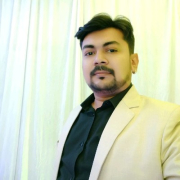


Fortinet FortiGate-VM and Check Point Harmony SASE both compete in the network security space. Check Point Harmony SASE has the upper hand due to its cloud-based architecture and ease of integration.
Features: Fortinet FortiGate-VM is known for advanced threat protection, flexible deployment options, and detailed reporting capabilities. Check Point Harmony SASE's seamless cloud-based access, integrated VPN, and Zero Trust Network Access (ZTNA) provide significant advantages. Harmony SASE's scalability and simplicity also stand out.
Room For Improvement: Fortinet FortiGate-VM could improve in policy management and logging capabilities. Check Point Harmony SASE needs more granular reporting and extended support for mobile platforms. These areas highlight where each solution could be refined.
Ease of Deployment and Customer Service: Fortinet FortiGate-VM deployment is straightforward but requires significant configuration time. Check Point Harmony SASE offers rapid deployment and straightforward integration. Both products receive positive customer service feedback, but Harmony SASE's ease of deployment provides an advantage.
Pricing and ROI: Fortinet FortiGate-VM is cost-effective with extensive capabilities but may have higher setup costs. Check Point Harmony SASE provides competitive pricing with strong ROI due to its cloud-native approach and minimal infrastructure requirements. Harmony SASE often yields better returns for organizations moving towards a SASE model.
Clients are now comfortable and not wasting productive hours on IT support.
The automation part is giving us a cost benefit and speed; we can react faster.
It's a very useful tool to mitigate and protect your enterprise.
Check Point Harmony SASE (formerly Perimeter 81) blocked access to those URLs at the network level before users could click through.
We are saving 40% of our time, which is good.
I observed a fifty to sixty percent reduction in operational costs after migrating to FortiGate VM.
They have a platform that organizes their networks and access effectively.
We haven't used MPLS for over five years now, and it was extremely beneficial to see the changes from MPLS to SD-WAN using Fortinet FortiGate.
They offer very accurate solutions.
The quick resolution of issues with Fortinet FortiGate is due to the support of the company and the fact that the equipment is easy to work with.
I would rate the technical support for Fortinet FortiGate a ten out of ten.
I would rate support 10 out of 10.
People working really hard, listening to every issue and request, and replying within hours.
The speed of Fortinet's technical support is significantly faster compared to Palo Alto.
Their support is helpful and effective.
The end-user support is delayed at levels L2 and L3.
They scale up really well from smaller models like the FortiGate 40 and 50 to bigger sites with the FortiGate 100 for more throughput - up to enterprise datacenters.
The variation comes in terms of the interfaces and throughputs, but from a security perspective, you get the same benefit, irrespective of whether you have an entry-level unit or an enterprise.
We determine sizing based on multiple factors: number of users, available links, traffic types, server count, services in use, and whether services will be published.
The cloud-native model ensures we are not tied to any specific location or hardware, which has been a great game changer in terms of agility.
I would rate it nine out of ten for scalability.
Check Point Harmony SASE's scalability is good; it can handle growth easily, allowing me to easily add another region and gateway to have more people join in.
Scalability is well-supported, with the notable ability to implement features easily.
It can start with a single core and scale up to a 32-core license for a robust deployment.
We currently have a little over 2,000 users working with Fortinet FortiGate in our environment.
We're experiencing 99.999% availability consistently.
I would rate the stability of Fortinet FortiGate a ten out of ten.
Currently, we are experiencing a general outage of one of the main internet service providers of the Dominican Republic, and we have not been impacted in our operations because with SD-WAN, we have another internet service provider and we are working with the second WAN connection without any disruption.
There are some lags and glitches with connectivity, so I would rate the stability as between seven or eight out of ten.
After the last improvement, I can say it is much more stable now.
Check Point Harmony SASE is stable most of the time, but there are still some issues that are hard to troubleshoot.
The product has been very stable, based on my ten to eleven years of experience.
In the past couple of years, they started releasing numerous new features, and things have become somewhat unstable.
The traffic is stable and seamless.
Investing in a solution that can accommodate such growth would be more cost-effective than repeatedly purchasing new hardware.
While Fortinet claims to offer a comprehensive network solution, it falls short in addressing computer application issues, particularly server security.
When considering Sophos XG, which we also use, the logging and reporting functionality is notably more efficient.
A local data center in Turkey would enhance the product, as currently, our Internet traffic goes to another country, which is problematic for us.
One area for improvement is integration with third-party identity providers.
The product is lacking features that other competitors have, making it quite challenging to migrate customers to this solution because it feels very much unfinished.
The constant daily revisions necessitate meticulous identification of the relevant documents to prevent the use of outdated information that could jeopardize our environment.
I am concerned about Fortinet's ability to help us meet regulatory compliance because its optimal functionality requires deploying all solutions within the mesh as Fortinet products.
The API needs better integration to match accounts and objects more effectively.
Last year, I renewed the support for three years, which can sometimes be expensive but depends on the security benefits and how it helps us.
It offers cost savings as it is generally cheaper than the competition.
It is about 20% cheaper.
Cost efficiency is a consideration, as SASE products are not the cheapest security products.
The cost is a bit expensive for most users.
It is a bit expensive.
FortiGate is priced lower than Palo Alto.
The license for Fortinet FortiGate-VM costs 100K to 150K Philippine pesos per year for VM1 or VM2.
They could be slightly cheaper, however, Fortinet offers a good cost-benefit ratio.
In terms of security, we have not experienced any security flaws or loopholes, and it has proven to be quite stable.
FortiGate has helped reduce the risk of cyberattacks that might disrupt our client's production.
These features help reduce our downtime, manage the ISPs, and deploy SLAs for all the website traffic.
The firewall management is the most valuable feature for me.
The Zero Trust Network Access (ZTNA) feature is a major highlight as it gives users seamless and secure access to internal resources without requiring a full-blown VPN, which improves both security and user experience.
The Zero Trust and segmentation have helped my team and our customers significantly because we are able to protect every scope and allow the work-from-home users to access internal resources while passing through a threat prevention gateway, ensuring that everything is safe.
The more integrated we become, the less we spend on solving bugs and issues, allowing us to reduce time focusing on understanding and improving our network.
Fortinet is the only provider to have successfully set up a unified operating system on all its products in the network security ecosystem.
I appreciate FortiGate's flexibility, which allows for centralized management through FortiManager.
| Product | Market Share (%) |
|---|---|
| Fortinet FortiGate | 20.4% |
| Fortinet FortiGate-VM | 1.9% |
| Check Point Harmony SASE (formerly Perimeter 81) | 0.2% |
| Other | 77.5% |



| Company Size | Count |
|---|---|
| Small Business | 350 |
| Midsize Enterprise | 130 |
| Large Enterprise | 187 |
| Company Size | Count |
|---|---|
| Small Business | 53 |
| Midsize Enterprise | 18 |
| Large Enterprise | 15 |
| Company Size | Count |
|---|---|
| Small Business | 68 |
| Midsize Enterprise | 31 |
| Large Enterprise | 33 |
Fortinet FortiGate excels in providing integrated VPN, firewalling, and Unified Threat Management (UTM) with centralized management and high availability. It supports remote access and comprehensive threat protection, making it a preferred choice for securing networks.
Fortinet FortiGate offers a robust security platform with features such as strong intrusion prevention, application control, and web filtering. Its integration with Active Directory and SD-WAN functionality provides scalable solutions for large networks. Users appreciate its ease of use through centralized management interfaces, ensuring robust security with flexible configurations. However, FortiGate could enhance its graphical interface and technical support responsiveness, address firmware bugs and costly licensing, improve logging, integrate better with third-party tools, and strengthen scalability and memory for log storage. Complexity in configuration and the need for intuitive features are noted challenges, and there's a demand for advanced security, zero-trust capabilities, and AI integration.
What are the key features of Fortinet FortiGate?Fortinet FortiGate is widely implemented across industries like education, finance, and government. Companies use it for firewall protection, VPN, and SD-WAN capabilities, ensuring secure perimeter and data center security. It facilitates remote access management and traffic routing optimization, offering reliable security and connectivity solutions.
Check Point Harmony SASE, formerly Perimeter 81, offers robust security features like split tunneling, MFA, and Zero Trust Network Access focused on secure remote access and optimized connectivity for remote teams.
Check Point Harmony SASE delivers advanced security through a user-friendly interface, efficient VPN connections, and a centralized management console. It enhances security with real-time threat intelligence from ThreatCloud and traffic management via built-in optimization. Firewall as a Service and Secure Web Gateway safeguard against unauthorized access and phishing. While users seek enhanced networking customizations and better integration with identity providers, there's an emphasis on improving reporting, real-time analytics, and policy management. Requests also include a Chrome extension, traffic balancing, and simplified configuration to address some resource-intensive aspects.
What are the key features of Check Point Harmony SASE?
How can organizations benefit from using Check Point Harmony SASE?
Check Point Harmony SASE is used across industries for secure remote access and connectivity, protecting sensitive data, and managing access to corporate resources. It is ideal for those with hybrid cloud models and requires comprehensive security measures combined with existing IT infrastructures to meet specific industry demands.
FortiGate Virtual Appliances allow you to mitigate blind spots by implementing critical security controls within your virtual infrastructure. They also allow you to rapidly provision security infrastructure whenever and wherever it is needed. FortiGate virtual appliances feature all of the security and networking services common to traditional hardware-based FortiGate appliances. With the addition of virtual appliances from Fortinet, you can deploy a mix of hardware and virtual appliances, operating together and managed from a common centralized management platform.
We monitor all Firewalls reviews to prevent fraudulent reviews and keep review quality high. We do not post reviews by company employees or direct competitors. We validate each review for authenticity via cross-reference with LinkedIn, and personal follow-up with the reviewer when necessary.